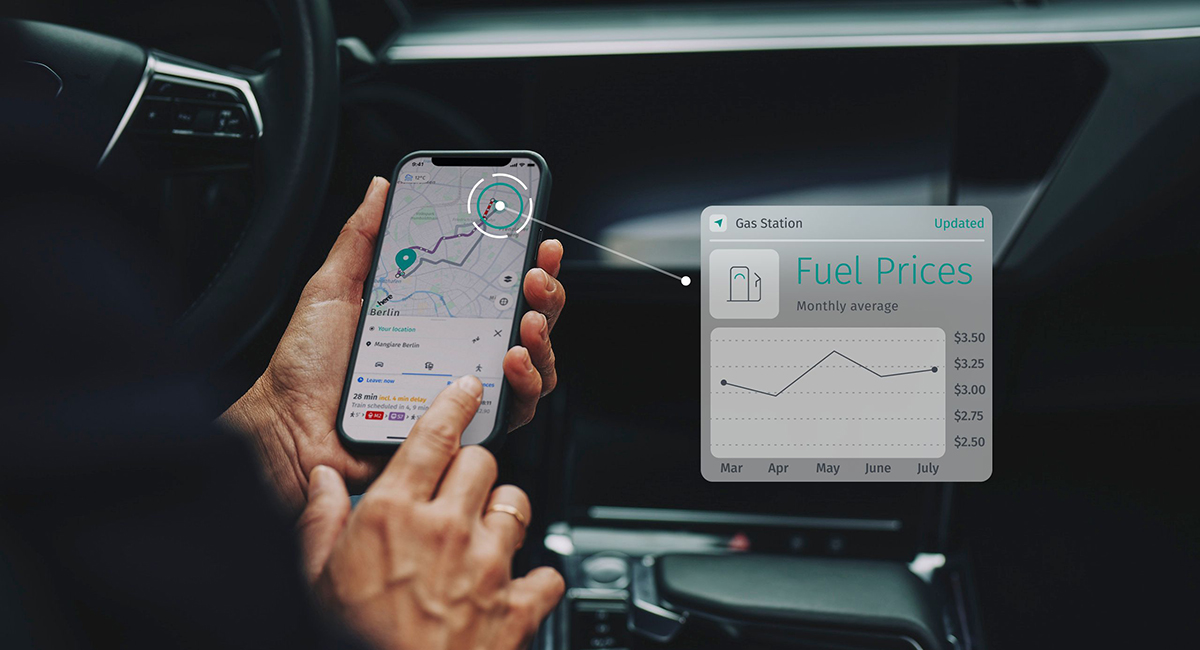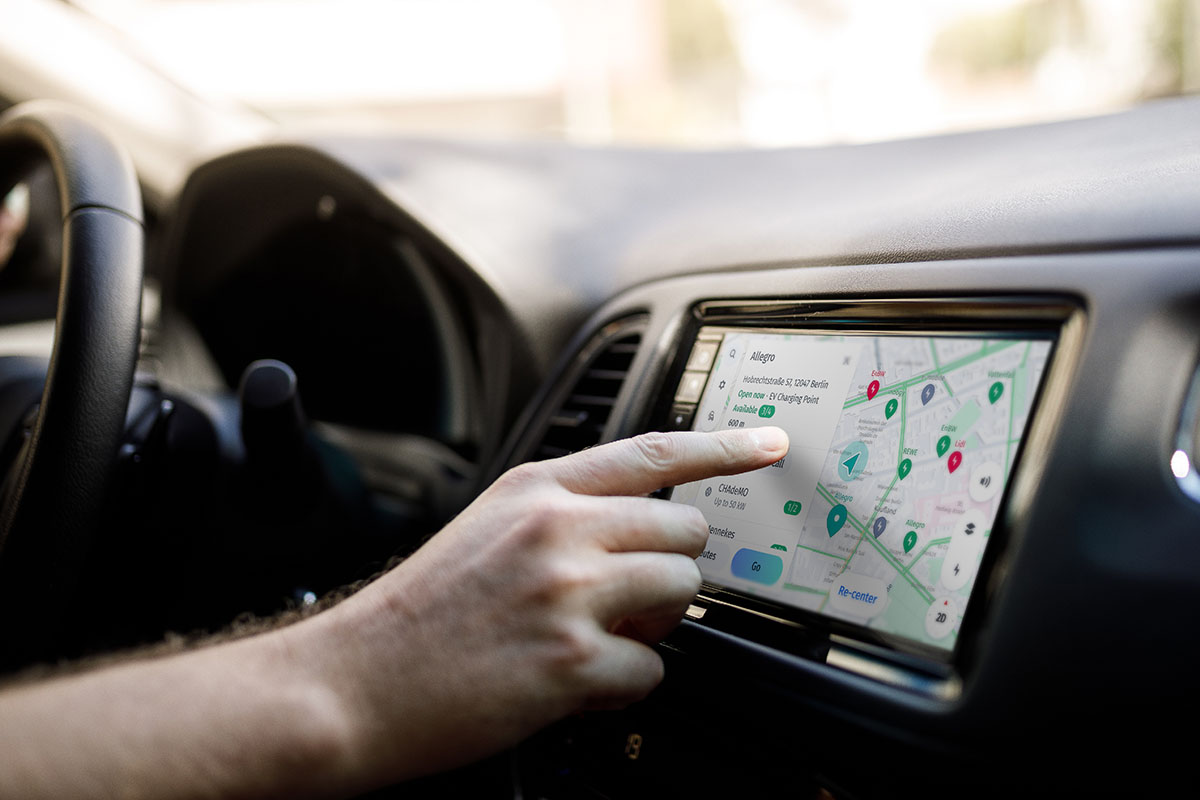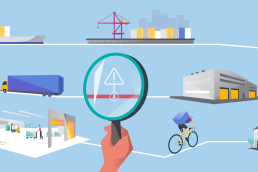More than half of all individuals use their smartphones for navigation. Whether this is to decide the best route before setting off or to avoid unexpected obstructions like traffic jams or road closures while on the move, mobile navigation is seen as essential. It has helped families get together at Christmas, CEOs attend important business meetings, and streamlined attendance at any number of other get-togethers.
HERE Technologies, the world’s number one location platform, offers its own navigation app to help individuals navigate their way around using their smartphones – HERE WeGo.

The key features of HERE WeGo
HERE WeGo is a free app, available for both iPhone and Android users, that leverages the HERE platform and HERE SDK, as well as HERE data and services. HERE WeGo provides real-time journey updates, turn-by-turn navigation, public transportation schedules, car and pedestrian guidance, offline maps and other advanced capabilities.
HERE WeGo offers alternative route suggestions for when users are undecided about which route to take, speed assistance to let them know when they’re going too fast, and even lane assistance to provide a helping hand when drivers are approaching a junction. Users can easily add waypoints as part of a bespoke multi-stop trip, save favourite places to make journey curation quicker, and adapt the look of the app by choosing from day or night themes.

Users can also enjoy several B2B integrations offered by HERE WeGo. The app provides accurate, up-to-date transport information and ticket pricing in real-time, makes shared mobility more accessible by offering all available transport options to customers, and provides information regarding on-demand ride-hailing to increase the flexibility on show. Integrated hospitality booking and the option of promoting services like parking, fueling and EV charging provide additional functionality for businesses.

How HERE WeGo compares with Google Maps and other navigation tools
Competition is fierce between different navigation apps – and it’s important users pick the best one for their needs.
HERE WeGo versus Google Maps
Google Maps features a sleek, intuitive design but can feel overwhelming due to its many features. HERE WeGo offers a simpler, user-friendly interface.
Although both HERE WeGo and Google Maps are able to leverage huge quantities of data to guarantee the accuracy of their navigation, one area where HERE WeGo has an advantage is in terms of its offline capabilities. Google Maps allows for specific area downloads for offline use, but it’s limited. HERE WeGo stands out with the ability to download entire countries or regions, ideal for remote travel. While Google Maps automatically deletes downloaded maps after a certain period, no such restrictions apply when using HERE WeGo. HERE WeGo also takes up less storage space on a user’s phone than Google Maps and offers a simplified user interface – particularly when in driving mode.
Google Maps integrates with Google services, offering local business info and AR walking directions but may raise privacy concerns. HERE WeGo includes features like car-sharing integration and public transport schedules but lacks some advanced options. HERE WeGo is ideal for those prioritizing offline navigation. The choice depends on your specific needs for online versus offline capabilities.
HERE WeGo versus Waze
Waze is another popular navigation tool, boasting around 151 million monthly active users. Waze features a vibrant and engaging interface, designed with a focus on user interaction and community-driven updates. It offers a playful and intuitive experience but can sometimes feel cluttered. HERE WeGo, in contrast, has a more straightforward and user-friendly interface, emphasizing ease of use over design flair.
Although both solutions offer accurate real-time traffic calculation, HERE WeGo lets users choose from a couple of extra transit options, including public transport and ride-sharing, both of which are likely to become increasingly important as cities start to embrace mobility-as-a-service offerings.
The fact that Waze does not allow users to download maps to their phones is another drawback, although offline navigation should still work without traffic updates. Waze requires an internet connection for most of its functionality, limiting its use in areas with poor connectivity. HERE WeGo shines in this aspect, allowing users to download entire countries or regions for offline use, making it ideal for remote travel or areas with limited internet access. HERE WeGo’s commitment to constant improvement is also a major plus-point. After HERE WeGo received almost 50,000 suggestions from users in 2021 in response to the company’s request for feedback, improvements like compatibility with Android Auto were implemented.

Waze integrates with music and podcast apps for in-app playback and offers carpooling features, leveraging its user community for ride-sharing. It also provides gas price updates and customizable voices for navigation. HERE WeGo includes useful features like car-sharing service integration, detailed public transport schedules, and taxi fare estimates but lacks the community-driven features of Waze.
Waze is useful for those who prioritize real-time, community-driven updates and dynamic rerouting, making it ideal for daily commutes and urban driving. HERE WeGo is the superior choice for offline navigation and straightforward, reliable directions, particularly useful for remote travel and areas with limited connectivity. The choice between the two depends on whether you value real-time community interaction or robust offline capabilities.
Although Google Maps, Waze, and HERE WeGo have all acquired a robust user base, only the HERE WeGo app offers the perfect mix of accuracy, offline functionality, and ongoing evolution.




